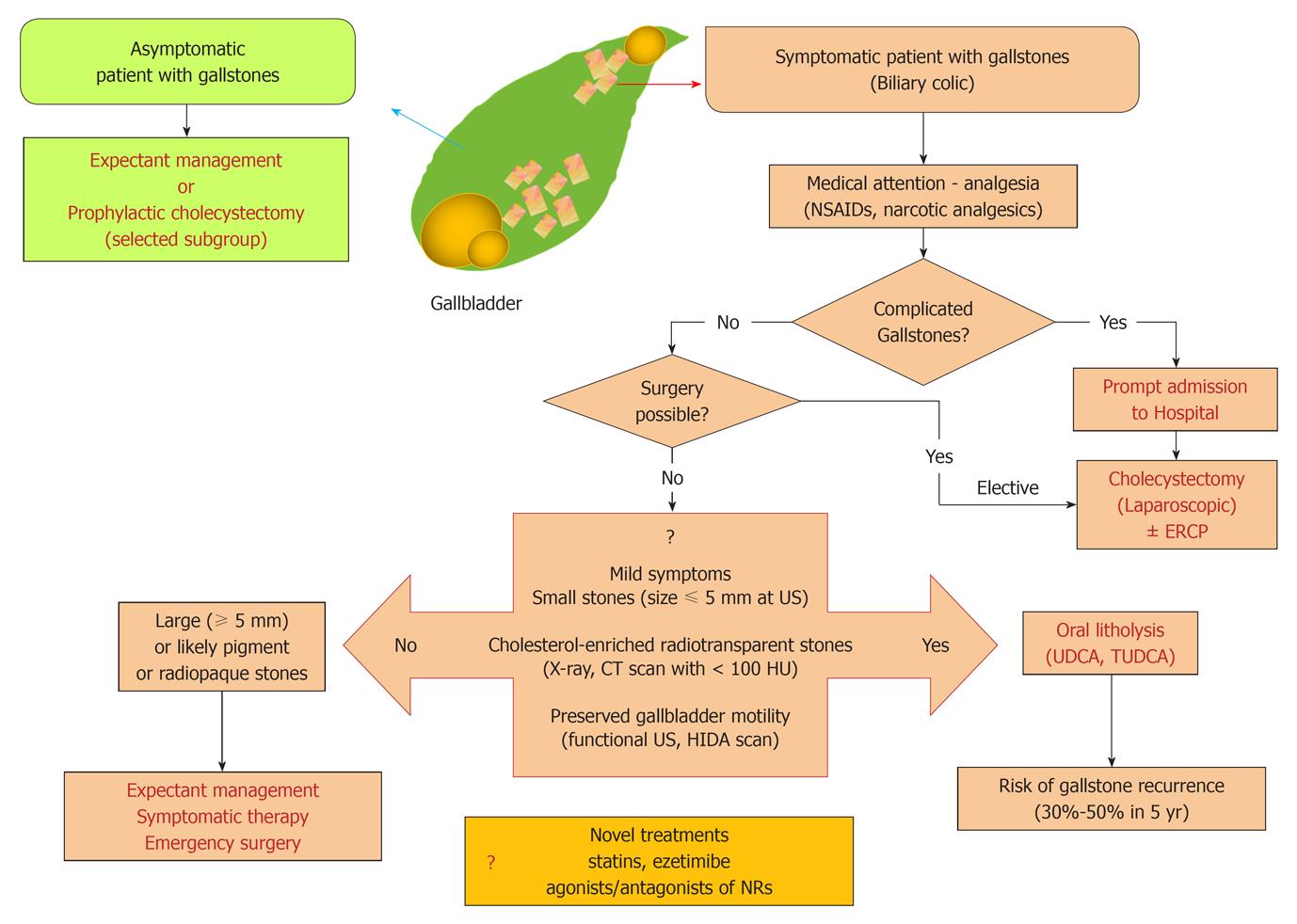Copyright
©2012 Baishideng.
World J Gastrointest Pharmacol Ther. Apr 6, 2012; 3(2): 7-20
Published online Apr 6, 2012. doi: 10.4292/wjgpt.v3.i2.7
Published online Apr 6, 2012. doi: 10.4292/wjgpt.v3.i2.7
Figure 1 Flow-chart depicting the standard therapies of gallstone disease (adapted from Portincasa et al[1,15,23,148]).
As a starting point, at the top the gallbladder containing “supersaturated” biliary cholesterol is depicted. Typical solid plate-like monohydrate cholesterol crystals form first and aggregate after, to grow as cholesterol stones. Left: flow-chart reserved to asymptomatic patients with gallstones (i.e., when stones/crystal aggregates are not impacted within the cystic duct). Best choice is expectant management, while few indications for prophylactic cholecystectomy exist and are reported in Table 2; Right: the complex flow-chart reserved to symptomatic gallstone patients is shown. This is the case when stones/crystal aggregates are impacted within the cystic duct. A key step is to identify the “symptomatic” patients with or without complications. In this respect, documenting the presence of biliary colic is of key importance. Meta-analyses indicate that surgery (cholecystectomy) is the gold standard for treating symptomatic gallstones[51-53]. For treatment of uncomplicated and complicated biliary colic, see also Tables 3 and 4. CT: Computed tomography; ERCP: Endoscopic retrograde cholangiopancreatography; HIDA: 99mTc-N-(2,6-dimethylacetanilide)-iminodiacetic acid; HU: Hounsfield Unit; NSAIDs: Non-steroidal anti-inflammatory drugs; NRs: Nuclear receptors; TUDCA: Tauroursodeoxycholic acid; UDCA: Ursodeoxycholic acid; US: Abdominal ultrasonography. The HU is an arbitrary unit of X-ray attenuation used for CT scans. Each voxel is assigned a value on a scale in which air has a value of -1000; water, 0; and compact bone, +1000.
- Citation: Portincasa P, Ciaula AD, Bonfrate L, Wang DQ. Therapy of gallstone disease: What it was, what it is, what it will be. World J Gastrointest Pharmacol Ther 2012; 3(2): 7-20
- URL: https://www.wjgnet.com/2150-5349/full/v3/i2/7.htm
- DOI: https://dx.doi.org/10.4292/wjgpt.v3.i2.7









